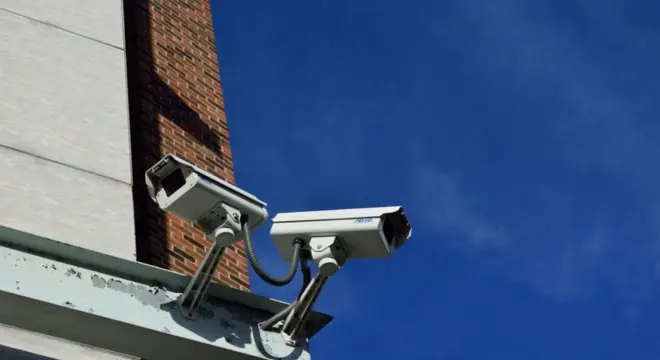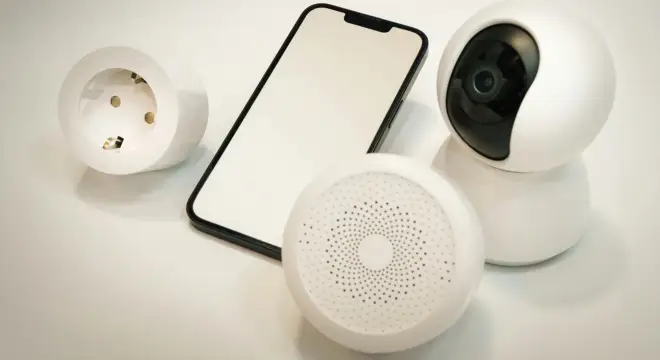Your Posts Could Tip Off Thieves: How Burglars Use Social Media
Think about the last time you posted a photo with a caption like “Off to Bali — back in two weeks.” I’ve read multiple reports and police advisories showing that public posts like that are exactly what burglars scan for when they pick a target.
In this piece I’ll show you the specific signals they watch (geotags, real-time stories, new valuables, fake friend accounts) and give you a no-nonsense, 10-minute audit you can run on your phone right now. No tech fluff — just clear steps you can do before your next trip.
If you believe “that won’t happen to me,” consider this: every public check-in, unstripped photo, or loud unboxing makes a house easier to case. Understanding how burglars use social media to target homes changes how you share — and it can stop a break-in before it even occurs.
Quick one before we dig in: is your main social account public or private right now? Tell me below and I’ll show exactly what to change in under ten minutes.
Why Social Media Has Become a Goldmine for Burglars?
I still remember when home security advice used to be simple: lock your doors, set up a motion light, maybe get a dog. But today, burglars don’t always start outside your window—they start inside your feed.
Social media is full of personal details: vacations, new purchases, daily routines. For you, it’s just sharing life. For a burglar, it’s free research.
If you stop and look at your past 30 posts, you’ll probably find at least one that hands someone useful info they shouldn’t have.
The Tricks Burglars Use to Spot Vulnerable Homes

Let’s cut straight to it—criminals aren’t geniuses. They’re opportunists. And social media hands them opportunities on a silver platter.
According to No Entry System, burglars rely on a handful of repeatable tricks that most people never notice:
- Vacation updates in real-time. Posting at the airport or beach is like announcing your house is empty.
- Location tagging. Geotags reveal where you are and indirectly when you aren’t home.
- Unboxing and flaunting. Showing new TVs, jewelry, or gadgets tells thieves what’s worth stealing.
- Fake friend requests. Local-looking fake profiles are used to join neighbourhood groups and gather intel.
- Routine mapping. Consistent posts about daily habits help map the best time to strike.
- Cross-platform linking. One photo can connect to other accounts and build a fuller picture of your life.
- Marketplace listings & delivery posts. These reveal recent buys and sometimes serial numbers or model details.
These are simple, repeatable signals—once you can spot them on your profile, you can start removing the obvious clues.
The Blind Spot Most People Ignore
Most articles warn against posting holiday photos or tagging your location. True. But burglars don’t always pick the easiest house—they pick the safest target for them.
Insight Security notes that burglars will often move on if a home appears monitored—active alarms, motion lights, or even a house that looks regularly checked deters them.
So don’t treat digital fixes as the only solution. Pair the online clean-up with a few visible, low-cost physical deterrents and you’ll look less attractive to anyone casing your street.
Simple tricks for your backyard, like motion lights and secure gates, can complement digital precautions — see our full guide on keeping your backyard safe for more ideas.
Quick Fixes You Can Do Today
Here’s the part everyone waits for—the actual “what should I do?” list. Most of this takes minutes.
- Delay your posts. Share vacation photos after you’re home.
- Turn off geotags. Stop automatic location tagging in your phone and apps.
- Tighten privacy settings. Switch posts from “public” to “friends only” and remove unknown followers.
- Audit old content. Go back 90 days and archive or change audience on risky posts.
- Watch what you show. Keep high-value items off public timelines or use private albums.
- Ask a neighbour to collect mail. Simple and effective when you’re away.
Do these five to six things now and you’ll close most of the obvious doors burglars use. It’s small work, big impact.
If you want quick, real-time alerts and tips on home security, there’s a handy channel where you can get concise updates straight to your phone — perfect to stay one step ahead of potential threats.
Platform-by-Platform Tips You Can’t Skip

Each platform has its own traps. Fixing them is low effort and worth it.
- Facebook: Bulk-change past posts to “friends,” turn off check-ins, and vet group membership.
Do a quick sweep of posts with location tags and remove anything that screams “empty house.” - Instagram: Don’t auto-add locations, use Close Friends for stories, and post trips after you return.
Stories feel ephemeral but they’re often screenshotted—treat them like regular posts. - X (Twitter): Disable location on tweets and unpin anything that reveals routine or travel plans.
Old pinned tweets can be an easy giveaway—clean them. - TikTok & Snapchat: Use Ghost Mode or limit Snap Map visibility to trusted contacts only.
Real-time clips are high-risk; delay them. - LinkedIn: Think twice before posting long travel itineraries—mixing platforms makes profiling simple.
If you must post work travel, avoid exact dates or city-by-city breakdowns.
Tweak these settings, and you’ll remove the platform-specific leaks that burglars exploit most often.
During holidays or extended trips, extra vigilance is key — we covered practical strategies in keeping your home safe while going all out for Halloween, which also work year-round.
Offline & Physical Security Tie-in
Even after cleaning up your social media, burglars will still look for easy wins. Small physical deterrents make a huge difference.
- Lights on timers. Simulates someone being home.
- Visible CCTV cameras or dummy cameras. Even a fake camera can make them think twice.
- Motion sensor lights. Unexpected lighting can scare off intruders.
- Neighbour watch. A trusted neighbour keeping an eye while you’re away is more effective than you think.
Combine these with your digital cleanup and you’re creating a double shield: they can’t predict when you’re gone, and they can’t get in without a visible risk.
Adding small physical deterrents like reinforced doors or basement windows that are hard to break can make burglars think twice before targeting your home.
Alarm & Tech Solutions
A solid alarm system is the final line of defense. You don’t need complex installations or expensive engineering.
- Wireless plug-and-play alarms. Easy to install, works in rentals, pet-friendly, and alerts instantly.
- Integration with smart lights or notifications. Some alarms can trigger lights or send phone alerts when someone approaches.
- Visible deterrence. Just seeing an alarm box outside is often enough to make a burglar move on.
Even a basic alarm paired with your social media cleanup and physical security fixes makes your home exponentially safer.
Social Snippets & Shareables
Sharing safety knowledge can protect you and your community. Quick, digestible snippets help people act immediately.
- Infographic: “Don’t Post This While Away.” Visual guide of risky posts.
- Tweet thread: 5–7 steps to audit social media for home safety.
- PDF checklist: 10-minute audit for personal use or sharing with neighbours.
These shareables also increase credibility. When someone saves or forwards them, your advice spreads and builds trust.
Final Thoughts
Burglars are opportunists. They scan feeds, geotags, routines, and public info. The combination of social media awareness, physical deterrents, and simple tech makes a home much less attractive.
Take a few minutes today: run the audit, adjust privacy, turn on a light timer, and maybe talk to a neighbor.
Now I want to ask you: which of these steps do you think will be the easiest to implement first, and why? Comment below — your answer might help someone else secure their home too.
Looking for more hands-on home security tips? Check out our home security section for practical, easy-to-follow advice.
Disclaimer: This article is for informational purposes only and does not replace professional security advice. Always consult local authorities or security experts for personalized guidance. The author is not responsible for any loss or damage resulting from actions taken based on this content.


